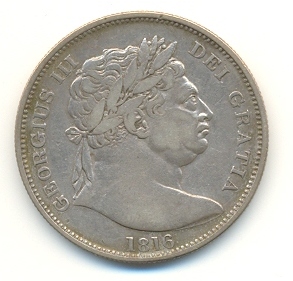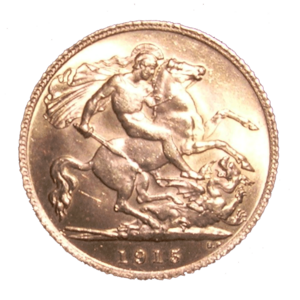Great Recoinage of 1816 facts for kids

The Great Recoinage of 1816 was a big effort by the British government to fix its money system, called the pound sterling. This happened after many years of tough times because of the French Revolutionary Wars and the Napoleonic Wars. The goal was to make British money stable again.
Contents
Why Britain Needed New Coins
Britain faced big money problems during the French Revolutionary Wars (1792–1802) and the Napoleonic Wars (1803–1815). The country spent a lot of money fighting France. Britain also paid other countries like Austria and Russia to fight alongside them. This huge spending made Britain's finances very shaky.
War's Impact on Money
The wars also messed up trade across Europe. This meant Britain had trouble selling its goods. There was a big shortage of silver and copper coins. Because of this, paper money became legal in 1797. Local companies and banks even started making their own tokens to use as money.
By the early 1800s, Britain's national debt had doubled. On top of that, bad harvests made food prices very high. This led to riots in 1801–02, as people struggled to afford food.
Corn Laws and Trade
After the wars ended, trade with Europe started again. This caused corn prices to drop by half. To protect British farmers, the government passed the Corn Laws in 1815. These laws tried to keep grain prices high. However, this meant people still had to spend most of their money on food. This left less money for other goods. Also, European countries that sold corn to Britain could no longer afford to buy British products.
Goals of the Recoinage
The government knew it had to fix the money system. The Great Recoinage was the first step. The main goals were:
- To bring back silver coins.
- To change the main gold coin from the guinea (worth 21 shillings) to the slightly lighter sovereign (worth 20 shillings).
The value of the shilling stayed the same at twelve pence.
New Coin Designs
The Royal Mint was in charge of making these new coins. They created standard gold sovereigns. They also made circulating crowns and half-crowns. These coins featured the famous image of St. George and the Dragon. This design was created by an Italian artist named Benedetto Pistrucci. Pistrucci's first portrait of George III on the coins is known as the "bull-head George." Later, copper farthings were also made in 1821.
How the New Coins Were Made
The new coins had very specific rules for their weight and value. These rules were set to make sure the money system was stable.
Gold Coin Standards
The weight of the new gold sovereigns was carefully planned. One troy pound of standard gold (which is 22 carat gold) was set to be worth £46 14s 6d. This meant each sovereign weighed about 7.98805 grams. This exact standard for gold sovereigns is still used today, more than 200 years later! To make sure gold was the main standard, silver coins could only be used for payments up to £2.
Silver Coin Production
After a long time without new silver coins, the mint produced a huge number of them. Between 1816 and 1820, they made almost 40 million shillings. They also made 17 million half-crowns and 1.3 million silver crowns.
The value of one troy pound of standard sterling silver (which is 92.5% pure silver) was set to be worth 66 shillings. This rule decided the weight of all silver coins. It even affected their replacements, like the cupro-nickel coins and later decimal coins, until the 1990s.
Weights of Silver Coins
The first silver coins made were:
- Shillings, weighing about 5.655 grams.
- Half-crowns, weighing about 14.138 grams.
- Crowns, weighing about 28.276 grams.
Over the years, other silver coins like the threepence, sixpence, and florin were also made. Their weights always followed the rule of 66 shillings per troy pound of silver.
See also


